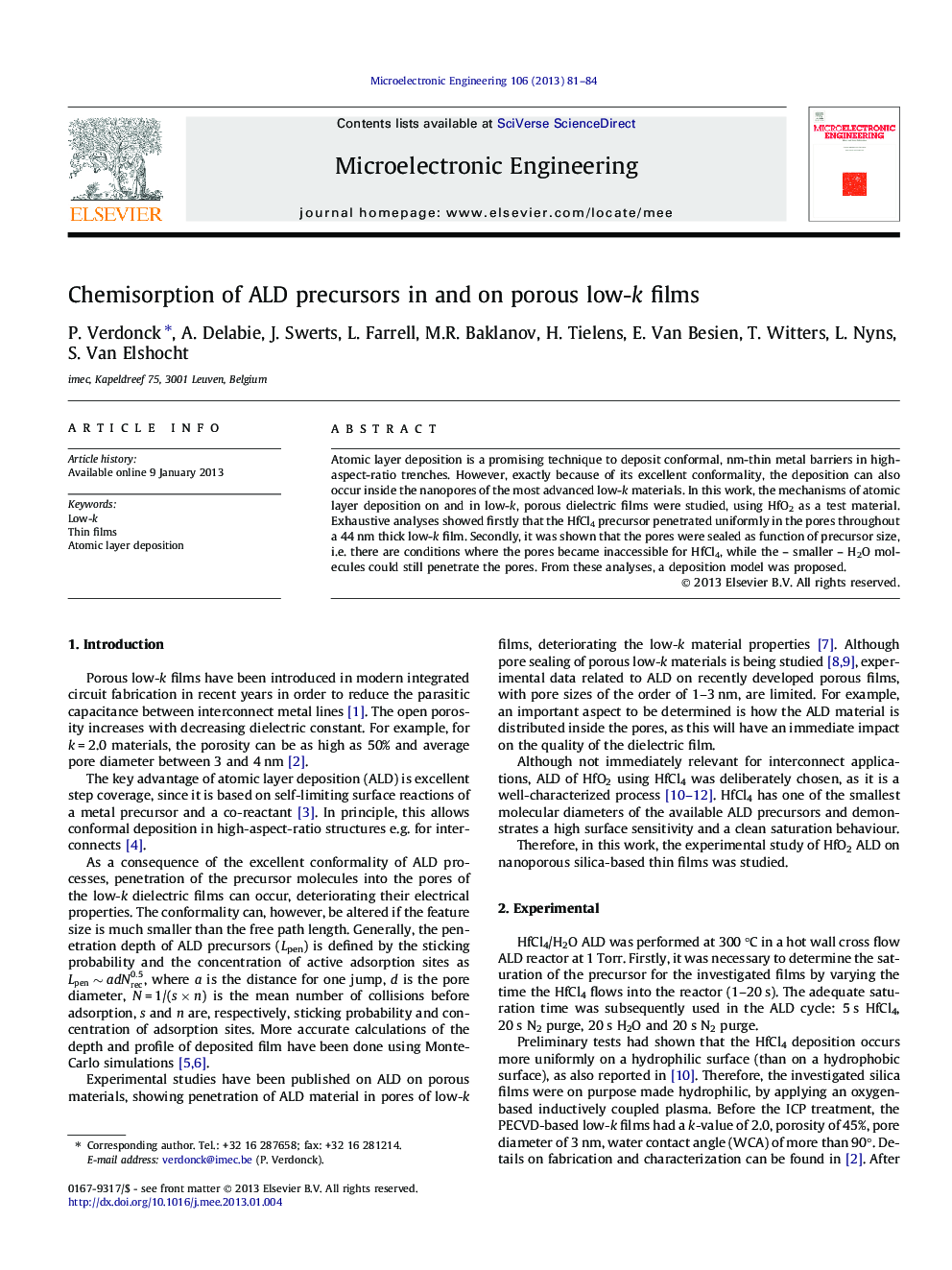| Article ID | Journal | Published Year | Pages | File Type |
|---|---|---|---|---|
| 542856 | Microelectronic Engineering | 2013 | 4 Pages |
Atomic layer deposition is a promising technique to deposit conformal, nm-thin metal barriers in high-aspect-ratio trenches. However, exactly because of its excellent conformality, the deposition can also occur inside the nanopores of the most advanced low-k materials. In this work, the mechanisms of atomic layer deposition on and in low-k, porous dielectric films were studied, using HfO2 as a test material. Exhaustive analyses showed firstly that the HfCl4 precursor penetrated uniformly in the pores throughout a 44 nm thick low-k film. Secondly, it was shown that the pores were sealed as function of precursor size, i.e. there are conditions where the pores became inaccessible for HfCl4, while the – smaller – H2O molecules could still penetrate the pores. From these analyses, a deposition model was proposed.
Graphical abstractSchematic representation of the mechanism of formation of HfO2 in and on the porous film.Figure optionsDownload full-size imageDownload as PowerPoint slide
